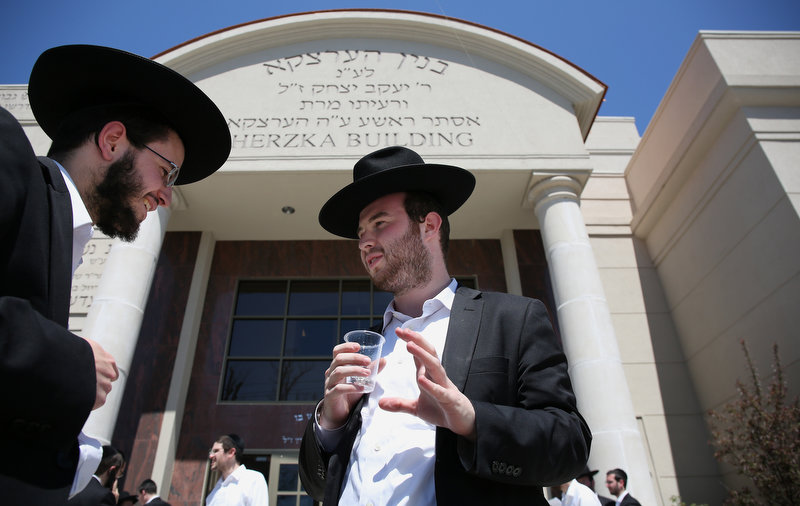Lakewood has experienced dramatic expansion over the years. Its population soared to 93,000, becoming New Jersey’s fifth-largest municipality. Lakewood remains primarily Orthodox with the majority of residents affiliated with Beth Medrash Govoha (BMG).
NJ Advance Media examines Lakewood’s challenges and opportunities.
1. High Holidays
Charter flights and helicopter rides connecting Lakewood, NJ residents with New York City and other economic hubs on the East Coast makes it no secret that many ultra-Orthodox Jewish residents choose a life combining Torah study with income generation. What truly distinguishes Lakewood’s ultra-Orthodox community, however, is their approach to celebrating High Holidays.
Children wearing costumes and bars packed with food have joined together as the Jewish community prepares for Purim, a festive holiday that commemorates being spared genocide. Chabad-Lubavitch, an organization which promotes traditional Judaism, has ramped up efforts to inform its community members about this celebration of freedom from genocide.
Arthur Lang arrived in Lakewood driving a souped-up 1974 Camaro coupe to begin studying Torah and raise a family centered on deep faith and strict customs. Attracted to Lakewood’s nationally renowned yeshiva college Beth Medrash Govoha (BMG), which attracts postgraduate students devoted to Haredi Judaism which emphasizes strict adherence to Jewish law while rejecting much of modern society’s values and practices, Lang decided BMG was his place.
2. Rosh Hashanah
Rosh Hashanah marks the Jewish New Year. A hollowed-out ram’s horn known as a shofar is used to stir our emotions and signal that this holiday should be viewed inward. Additionally, Cheshbon HaNefesh or personal assessment is often part of this tradition as people consider their past actions and seek forgiveness for past transgressions.
Holiday celebrations begin with prayers read from a Machzor prayerbook and concluded by spreading honey-covered bread known as Challah on to symbolize hope for a sweet year ahead. Sliced apples dipped in honey are also served, along with 613 seeded pomegranates that represent God’s commandments.
Arthur Lang first came to Lakewood in 1985 in his modified 1974 Camaro coupe, eager to immerse himself in Torah study, find a wife, and raise a family grounded in religious traditions and customs that reflect deep faith. Today, Lakewood is home to one of the country’s largest yeshivas as well as flourishing Jewish businesses; yet not everyone in its residents are pleased with how things have turned out.
3. Yom Kippur
The final day of the High Holidays marks an opportunity for reflection and atonement, featuring prayers and fasting (abstinence from food and beverage).
Jewish individuals perform the Kol Nidre service each year to atone for any sins they have committed, seek forgiveness from both God and other individuals for any vows made but broken during the past year, make new promises for the future, and blow the Shofar–an animal horn symbolizing Jewish renewal–long enough to symbolize its significance in ending fasts.
Religious Jews also celebrate this holiday with great euphoria, particularly if their attempts at being holy and pure have been successful. Some contribute to charity on the days leading up to Atonement Day while participating in an ancient tradition called Kapparot; during which they hold up either live chickens or bundles of coins above their heads while praying a short prayer cycle and then donate these goods or money directly to those less fortunate.
4. Passover
Lakewood boasts more than its business boom and state-of-the-art airport. It boasts a vibrant Jewish community and houses the largest yeshiva in North America. However, Lakewood has also experienced significant growth that makes finding services difficult for some families.
On the first night of Passover (also known as Pesach), Jews celebrate by gathering for a Seder dinner to recall the tale of Exodus from Egypt and dine on food such as matzah ball soup and brisket – while searching for any leavened bread or flour known as “chametz.”
Many families follow tradition by conducting a thorough spring cleaning of their kitchens and crockery to look for any potential sources of chametz before the holiday begins. Furthermore, families keep separate sets of dishes, cutlery and utensils which haven’t come into contact with chometz in order to use during this special time of celebration.
5. Shavuot
Shavuot (pronounced Shaw-vat) is the Jewish holiday commemorating when Moses received the Ten Commandments via divine revelation on Mount Sinai, as well as marking the culmination of seven weeks known as Omer Counting which started during Passover.
Tradition dictates that Jews celebrate this holiday by indulging in dairy foods, decorating their homes and synagogues with flowers and greenery to symbolize its agricultural origins. Additionally, many stay up all night reading classic Torah texts known as Tikkun Leil Shavuot; others attend services where the 10 Commandments are read aloud.
One thing that might surprise you about Lakewood’s ultra-Orthodox community is how distinctly diverse it seems, even among immigrant groups. Though immigrant groups typically cluster together in certain neighborhoods, you’ll find interactions among various Hassidic sects, Syrians, Litvaks, and others here; you may even witness them all praying at synagogues together and learning together! This diversity reflects Jewish law which forbids driving on religious days – they must therefore live close enough so they can walk to reach them on foot!


